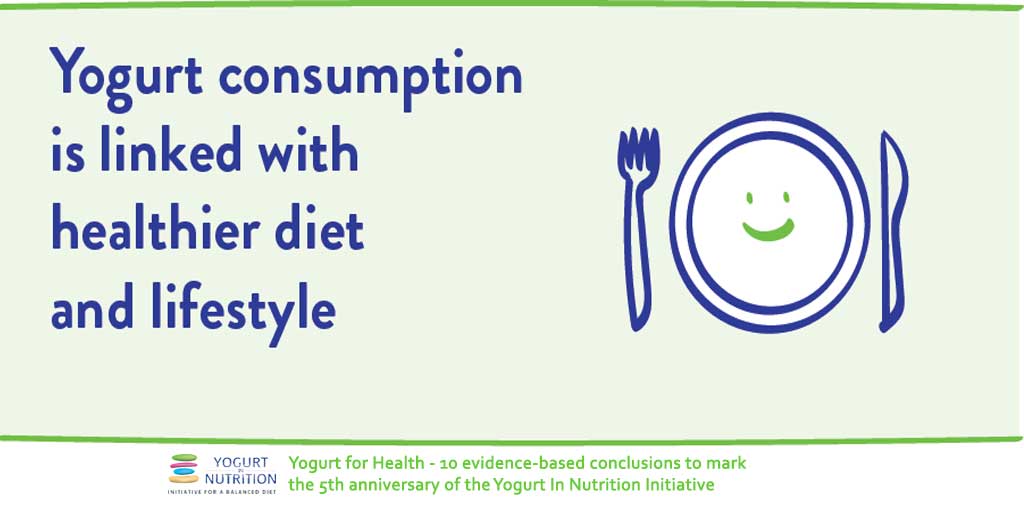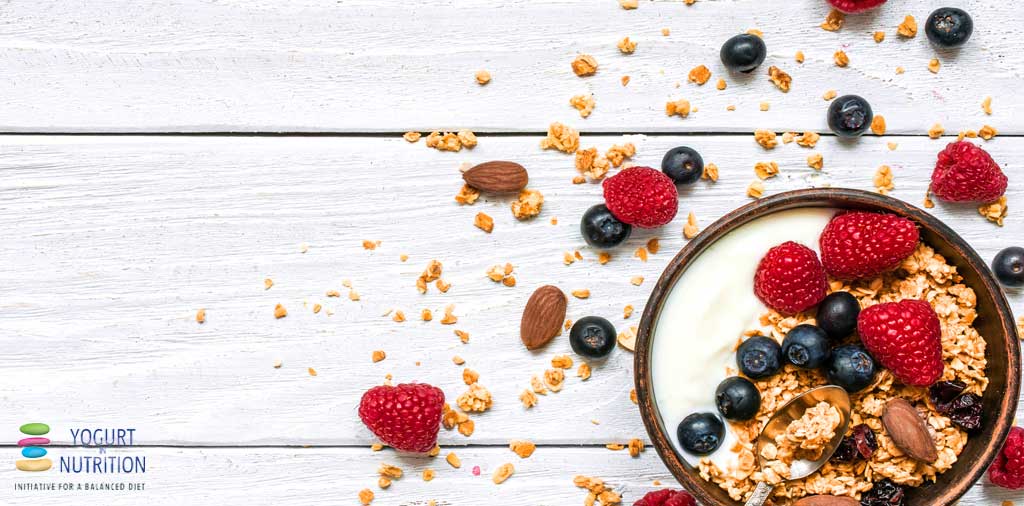nutrition
 About nutrition
About nutrition
How to define “nutrition”?
Nutrition can be defined as “the intake of food, considered in relation to the body’s dietary needs”, according to the World Health Organization. Despite cultural differences around the World, nutritional guidelines worldwide remains quite similar. These guidelines are not always presented in the same way, and the recommendation of food groups depends on local culture and food safety issues, but the guidelines globally promote the same nutrients and food groups.
Why is nutrition important for health?
The purpose of nutritional guidelines is to guide the population towards balanced diet, in order to improve public health. This relies on the scientific consensus that a heathy diet contributes to both preserving and enhancing overall health. A healthy diet follows dietary guidelines, in terms of macronutrients and micronutrients.
Food supply matters but is far from being the only factor of a healthy diet. Actually, in countries where the food is overabundant, a significant part of the population does not comply with the Dietary References Intakes (DRI) regarding several minerals, and vitamins (1).
When their intake is too low, some of the nutrients may even be a threat to human health. To tackle this issue, the 2015 US Dietary Guidelines (1) have defined these nutrients as “nutrients of concern”. Because they are under-consumed, calcium, potassium, vitamin D and fibers belong to “nutrients of concern”. National and international organizations advise certain food types, rather than nutrients, because it’s easier to comply with such guidelines, in order to meet the body requirements of nutrients of concern.
Why are dairy products recommended?
Among others, the Food and Agriculture Organization of the United Nations (FAO) and the US Dietary Guidelines advocate to consume dairy products daily, and especially yogurt. Including dairy products in your diet is an easy way to comply with vitamin D, calcium and potassium reference intakes. It is recommended in several countries (2,3,4,5).
Milk contains nine essential nutrients, which contribute to optimal health: vitamins A, D and B12, calcium, potassium, riboflavin, phosphorus, protein and niacin equivalents.
Milk and yogurt have similar nutrient contents but yogurt brings higher proportions of calcium, potassium, magnesium, riboflavin, zinc and vitamin B12.
Therefore, dairy foods provide many nutrients including nutrients of concern such as calcium, vitamin D and potassium, thus promoting health (5,7,8).
A French study has evaluated the benefits of an increased dairy eating (6). Using the dietary record of 986 French adults, this study revealed that fresh dairy foods consumption is associated with higher scores of diet quality and better compliance with French dietary guidelines. High consumption of fresh dairy foods was associated with high consumption of vegetables, fruits, fish, nuts, fibers, water and less alcohol. In addition, high dairies consumers had better intake of micronutrients, even for vitamins C and B9, which are not mainly brought by dairy products.
Among other dairy products, yogurt is especially recommended. Scientific research has associated yogurt with a better overall diet quality and a healthier status.
How is yogurt intake related to healthier eating?
Yogurt is particularly worth of interest since many scientific studies (7-12) have shown that yogurt consumers have a diet more diverse and balanced, better complying with nutritional guidelines than non-consumers.

Here are the main reasons explaining how yogurt contributes to healthier eating:
- Yogurt contains living bacterial cultures, which can be considered as probiotics, vitamins and minerals (vitamins A and D, calcium, magnesium, potassium and phosphorus) and high protein content
- Yogurt is part of a prudent diet defined by higher intakes of fruits, vegetables, non-hydrogenated fats, nuts, yogurt, fish and seafood (13)
- Yogurt consumption is linked to lower waist circumference, lower waist-to-hip ratio and lower body weight and may be linked to lower BMI (14).
Why do we need calcium and vitamin D?
Calcium intakes matters at any age, especially for teenagers and seniors. 99% of calcium resides in our bones, being directly used for skeleton building. The remaining calcium is also important since it is stocked in blood to take part in nerves and muscles functions. Foods rich in calcium include dairy products such as milk and yogurt, but also spinach, soybeans, sardines or salmon.
Bone health
Calcium and vitamin D intervene in bone growth, and teenagers need great levels of calcium. Yogurt can sustain a healthy bone growth since it contains calcium, vitamin D and proteins (15-18). A review has analyzed available evidence, regarding associations between dairy intake and health outcomes in children and teenagers. Data suggest that dairy products are needed in childhood for linear growth and bone health. In addition cheese and yogurt are associated with less dental caries in children.
Daily physical activity and balanced diet are very important for bone health and osteoporosis prevention. Meeting reference intakes on calcium and vitamin D allows bone growth to reach its maximum level in childhood. It is also crucial for adults to prevent bone loss. As for seniors, bone health is key to remain mobile and independent. Yogurt is especially advised to meet a good intake of both calcium and vitamin D (15-22).
Other people at risk are lactose maldigesters and lactose intolerants because they tend to avoid all dairy products, and this behavior increases the risk of calcium shortage and osteoporosis. Yogurt is also recommended for them thanks to its live bacteria which help lactose digestion.
Why do we need protein?
Protein is a key element for the structure of our tissues and organs. Protein is also needed as part of enzymes, hormones and other chemicals.
Satiety and hunger management
Several studies have demonstrated that protein contributes to satiety and hunger management (23-28). Satiety refers to the satisfaction we feel after having a meal. Therefore satiety influences how much we eat. With an increased satiety, we usually eat less at the next meal.
Foods providing satiety could help people to take care of their health and watch over their weight, which is hard when food is abundant. According to several studies, calories (energy) from protein are more satiating that those coming from carbohydrate or fat, probably due to a relationship with the hormones that regulate appetite. This observation explains why yogurt and especially protein-rich yogurt gives fullness feelings. Another great feature of yogurt is that it can be consumed either for breakfast, end of meal or even snacking.
Type 2 diabetes
Current world public health issues include obesity and type 2 diabetes and indeed, preventing these conditions is one of the biggest health challenges. Because appetite and the peak of glucose level after a meal could partly influence the development of these two conditions, some foods should be favored among others. For instance, having yogurt and cheese in your meals can reduce appetite and control blood glucose, potentially protecting you from obesity and type 2 diabetes(29). Also, there is a beneficial relationship between a higher consumption of dairy foods, (such as milk, cheese, yogurt and whey proteins), and glucose regulation and/or T2D risk. (30)
Yogurt & fruits: a winning combination?
It is well known that fruits and vegetables consumption has health benefits, and most nutritional guidelines include fruits consumption. Fruits and vegetables are low energy and nutrient dense foods, providing antioxidants and fibers that contribute to healthy gut microbiota, fibers being assimilated to prebiotics.
As for yogurt, health benefits are numerous too. Besides its high nutrient density and low energy, yogurt contains lactic acid bacteria. These living bacteria may be beneficial for gut microbiota and influence food matrix, thus having a role in glycemic control and appetite (31). Recent studies suggest that yogurt consumption could also impact behaviors, stress and also depression. However surprising it seems, the link between yogurt and reduced depression has been shown by two studies, which is promising. There may be benefits left to find about yogurt (32, 33).
Here is why yogurt & fruits is the winning combination:
- Both fruit consumption and yogurt consumption are associated with healthier dietary pattern.
- Taken together, yogurt and fruits have potential prebiotics and probiotics effects, and may therefore be beneficial for gut microbiota.
- They can constitute a meal substituting nutrient-poor or obesogenic meals (34).
Do we need fermented foods?
Few nutritional guidelines include fermented foods. However fermentation is a quite common process and fermented foods, many of them being traditional foods, are used in our meals. Fermented foods and beverages rely on lacto-fermentation with lactic acid bacteria or yeast able to create lactic acid.
Here are some examples of fermented foods: yogurt and milk (kefir, skyr, greek yogurt, lassi, leben…), soya (miso, soy sauce), cheese, cabbages (sauerkraut, kimchi)…
The very unique process of fermentation is believed to confer health properties to some of fermented foods thanks to microorganisms, according to recent studies (35).
In particular, one study claimed that fermented milk could alleviate symptoms of irritable bowel syndrome, probably thanks to the influence of such food on gut microbiota. The diarrhea that people regularly encountered after taking antibiotics could also be avoided by some fermented foods. All health benefits likely come from the live microorganisms that are present in some types of fermented foods.
Available evidence suggest that fermented foods contribute to healthy diet for many reasons, among which we could mention:
- Fermentation can improve or damage properties of food constituents, these properties being nutritional or health-modulating.
- Fermented foods can bring live microorganisms to your diet.
- Microorganisms contained in fermented foods improve digestion, produce vitamins B12 and K. These microorganisms thus bring new molecules to the gut.

Sources and references:
[1] U.S. Department of Health and Human Services and U.S. Department of Agriculture. 2015 – 2020 Dietary Guidelines for Americans. 8th Edition. December 2015.
[2] Murphy MM et al, Daily intake of dairy products in Brazil and contributions to nutrient intakes: a cross-sectional study, Public Health Nutrition, 2015
[3] Lecerf, J.M. et al., Who are fresh dairy products consumers ? Analysis of their dietary and nutritional profiles, Nutrition clinique et métabolisme 2015, pg. 1-29
[4] Ragovin H. Tufts Nutrition, 2015, vol. 1; n°6: 14-17.
[5] Keast, D. R., et al (2015). Associations between yogurt, dairy, calcium, and vitamin D intake and obesity among U.S. children aged 8-18 years: NHANES, 2005-2008. Nutrients
[6] Lecerf, J.-M., Hebel, P. and Colin, J. (2014), Positive association between fresh dairy products consumption and healthy eating indexes in french adults (1018.8). The FASEB Journal, 28: 1018.8.
[7] Martinchik AN, et al. [Yogurt consumption and reduced risk of overweight and obesity in adults]. Voprosy pitaniia 2016;85:56-65.
[8] Mistura L, et al. Diet quality of Italian yogurt consumers: an application of the probability of adequate nutrient intake score (PANDiet). International journal of food sciences and nutrition 2016;67:232-8.
[9] O’Connor LM, Lentjes MA, Luben RN, Khaw KT, Wareham NJ, Forouhi NG. Dietary dairy product intake and incident type 2 diabetes: a prospective study using dietary data from a 7-day food diary. Diabetologia 2014;57:909-17.
[10] Panahi S, Tremblay A. The Potential Role of Yogurt in Weight Management and Prevention of Type 2 Diabetes. J Am Coll Nutr 2016:1-15.
[11] Wang H, Troy LM, Rogers GT, et al. Longitudinal association between dairy consumption and changes of body weight and waist circumference: the Framingham Heart Study. Int J Obes (Lond) 2014;38:299-305
[12] Webb D, Donovan SM, Meydani SN. The role of yogurt in improving the quality of the American diet and meeting dietary guidelines. Nutrition reviews 2014;72:180-9.
[13] Possa, G. et al., Probability and amounts of yogurt intake are differently affected by sociodemographic, economic, and lifestyle factors in adults and the elderly-results from a population-based study, Nutrition Research, August 2015, Vol 35(8), pp. 700–706
[14] Cormier H, Thifault E et al. Association between yogurt consumption, dietary patterns, and cardio-metabolic risk factors. Eur J Nutr, 2016, 55(2) : 577-87
[15] Weaver, C. M., Gordon, C. M., Janz, K. F., et al. (2016). The National Osteoporosis Foundation’s position statement on peak bone mass development and lifestyle factors: a systematic review and implementation recommendations. Osteoporosis international, 27(4), 1281–1386.
[16] Neville H. Golden, et al., Optimizing bone health in children and adolescents, Pediatrics, 2014 doi: 10.1542/peds.2014-2173
[17] Lee GJ et al. CMAJ, 2014, doi: 10.1503/cmaj.140555
[18] Dror, D. K., & Allen, L. H. (2014). Dairy product intake in children and adolescents in developed countries: trends, nutritional contribution, and a review of association with health outcomes. Nutrition reviews, 72(2), 68–81.
[19] Quann EE, Fulgoni VL, Auestad N, Consuming the daily recommended amounts of dairy products would reduce the prevalence of inadequate micronutrient intakes in the United States: diet modeling study based on NHANES 2007-2010; Nutr J. ; 2015;14:90.
[20] E. B. Williams et al. Nutrition Bulletin Volume 40, Issue 1, pages 9–32, March 2015
[21] Luis G. et al., Journal of Food Composition and Analysis, May 2015, Volume 39, pg. 48-54
[22] Hess J, Slavin J. Nutrients. 2014 Oct 30;6(11):4750-4759.
[23] Douglas A, Minihane AM, Givens, DI, et al. Differential effects of dairy snacks on appetite, but not overall energy intake. Br J Nutr 2012;108:2274–85
[24] Tsuchiya A, Almiron-Roig E, Lluch A, et al. Higher satiety ratings following yogurt consumption relative to fruit drink or dairy fruit drink. J Am Diet Assoc 2006;106:550–7.
[25] Chapelot D, Payen F. Comparison of the effects of a liquid yogurt and chocolate bars on satiety: a multidimensional approach. Br J Nutr 2010;103:760–7.
[26] Ortinau LC, Hoertel HA, Douglas SM, et al. Effects of high-protein vs. high-fat snacks on appetite control, satiety, and eating initiation in healthy women. Nutr J 2014 ;13:97.
[27] Benelam B. Satiation, satiety and their effects on eating behaviour. Nutr Bull.; 2009, 34, 126-173.
[28] Paddon-Jones D, Westman, Mattes RD et al. Protein, weight management, and satiety. Am J Clin Nutr. 2008;87(5):1558S-1561S.
[29] Law M, Lee YT, Vien S et al. The effect of dairy products consumed with high glycemic carbohydrate on subjective appetite, food intake, and postprandial glycemia in older adults. Appl Physiol Nutr Metab. 2017;42(11):1210-6
[30] Comerford, Kevin B., and Gonca Pasin. 2016. “Emerging Evidence for the Importance of Dietary Protein Source on Glucoregulatory Markers and Type 2 Diabetes: Different Effects of Dairy, Meat, Fish, Egg, and Plant Protein Foods” Nutrients 8, no. 8: 446.
[31] Kongerslev Thorning T. et al. Whole dairy matrix or single nutrients in assessment of health effects: current evidence and knowledge gaps. American Journal of Clinical Nutrition. First published ahead of print April 12, 2017.
[32] Aurora Perez-Cornago, Almudena Sanchez-Villegas, Maira Bes-Rastrollo, et al., Intake of High-Fat Yogurt, but Not of Low-Fat Yogurt or Prebiotics, Is Related to Lower Risk of Depression in Women of the SUN Cohort Study, The Journal of Nutrition, Volume 146, Issue 9, September 2016, Pages 1731–1739
[33] Marin, I. A. et al. Sciences Report 2017; 7, 43859; doi: 10.1038/srep43859
[34] Fernandez, M. A., & Marette, A. (2017). Potential Health Benefits of Combining Yogurt and Fruits Based on Their Probiotic and Prebiotic Properties. Advances in nutrition (Bethesda, Md.), 8(1), 155S–164S.
[35] Marco, Maria L et al. “Health benefits of fermented foods: microbiota and beyond.” Current opinion in biotechnology vol. 44 (2017): 94-102.










